North Carolina has a girls’ high school basketball problem, and it’s not going away
- Oops!Something went wrong.Please try again later.
Last fall, Aaron Brown officially started his job as Hopewell High School’s third girls’ basketball coach in four years.
When tryouts began in October, Brown expected he might have 30 or 40 girls try out, enough to put together a junior varsity and varsity roster.
Instead, 14 girls showed up. And only four of those had played varsity high school basketball.
“It’s been a challenge,” said Brown, 53, whose team just finished a season where the Titans posted a 2-22 record and were outscored, on average, by a score of 66-17.
“I still think we’re feeling the lingering effect of Covid,” Brown said of his school and the area, where interest in girls’ basketball has dropped. “A lot of girls have stopped participating and lost interest. And competing with other sports, I find, is a big thing. There’s a lot of girls doing soccer year-round. Club soccer is definitely affecting (girls’) basketball, especially here at Hopewell.”
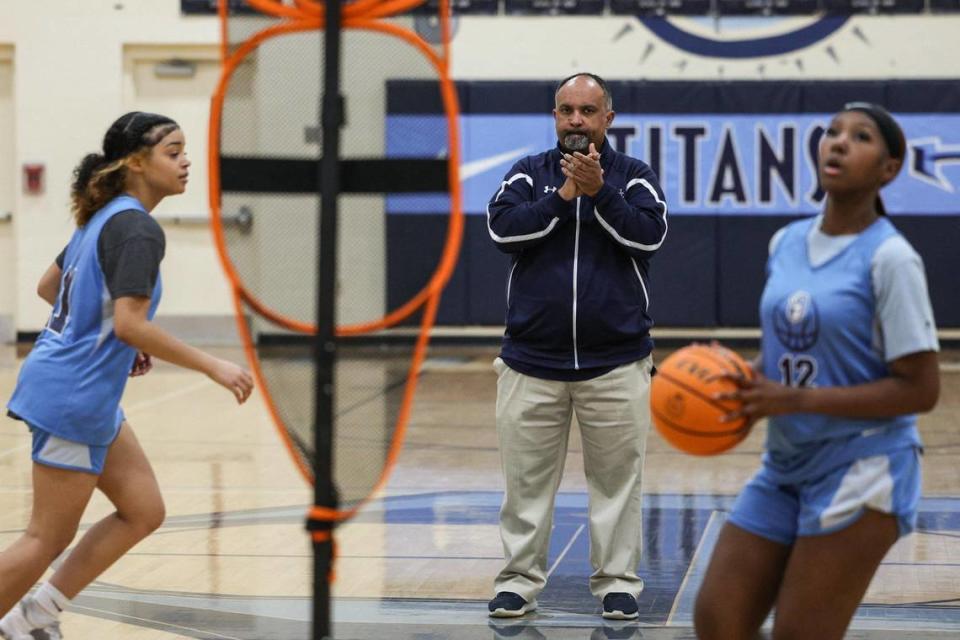
Whatever it is, in the 2023-24 season, a theme has emerged in girls’ basketball and it doesn’t appear to be going anywhere anytime soon:
You’re either really good these days — or you’re not.
The gap between North Carolina’s haves and have-nots has perhaps never been wider.
Just two years ago, for example, West Mecklenburg didn’t win a game, but the Hawks’ average margin of defeat was about 25 points per game.
Two years ago, West Meck’s conference had four teams with a winning record and the Hawks were the only team with fewer than seven wins.
This year?
Three league teams have three or fewer wins, and the scores in that Queen City 3A/4A conference — and around the state — are often eye-popping.
These are some real scores that have been reported to The Charlotte Observer this season: 96-7, 97-5, 102-5. Those types of scores make some other results — 83-34, 74-27, 90-23 — almost seem normal.
And those types of scores are reported every Tuesday and Friday.
“I don’t know what a coach thinks about when you lose 109-5,” Hopewell’s Brown said. “One thing is (your team’s) morale. We address it by saying, ‘We’ve got to put it behind us. We’ve got to persevere.’ That’s an adverse situation. But even though we’re taking a lot of lopsided defeats, we haven’t had the issue with bad body language, demeanor and lack of hope. Anybody that has seen us play knows we play from beginning to end, 32 minutes, hard. That’s whether we’re up or down by 80, 40, 20, 15.”
Where did the girls go?
Area coaches, like Brown, said the Charlotte area has a smaller pool of players than in the past and that more talented players — sometimes directed by summer basketball coaches — are finding ways to come together on a handful of teams.
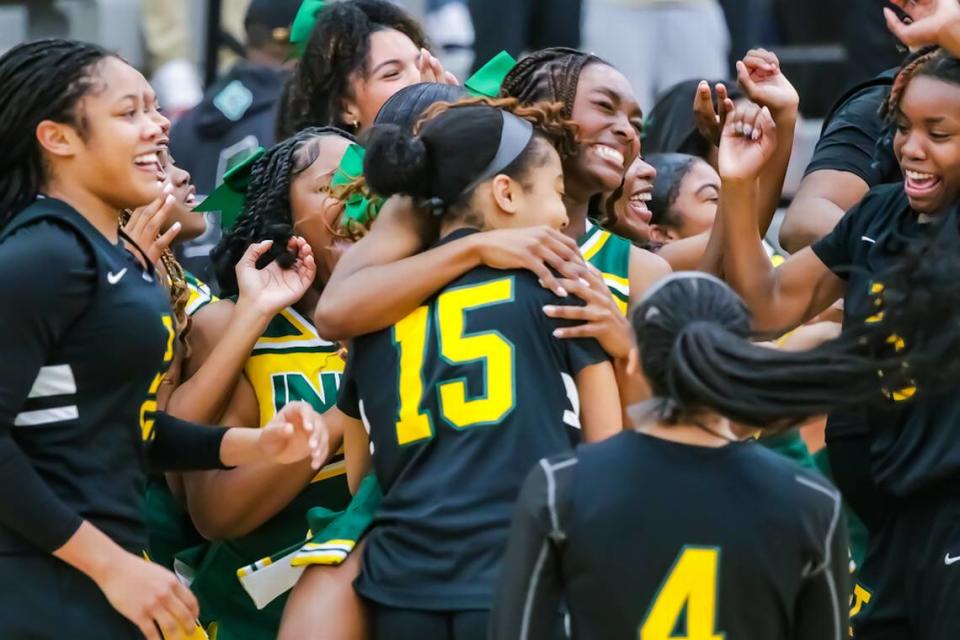
Taking good players from other schools makes those teams weaker, coaches say, and creates that situation where you have no middle class.
Charlotte-Mecklenburg Schools did not respond to an Observer request for girls’ basketball participation figures, but anecdotally, coaches have said fewer junior varsity teams are playing and there are fewer players on many varsity teams now, too.
In the 2022-23 National Federation of High Schools survey, there were 383,362 girls playing basketball nationwide and 7,470 in North Carolina.
Five years ago, there were 399,067 girls playing nationally and 7,649 in North Carolina.
Six years ago, there were 7,913 girls playing basketball in North Carolina.
See the trend?
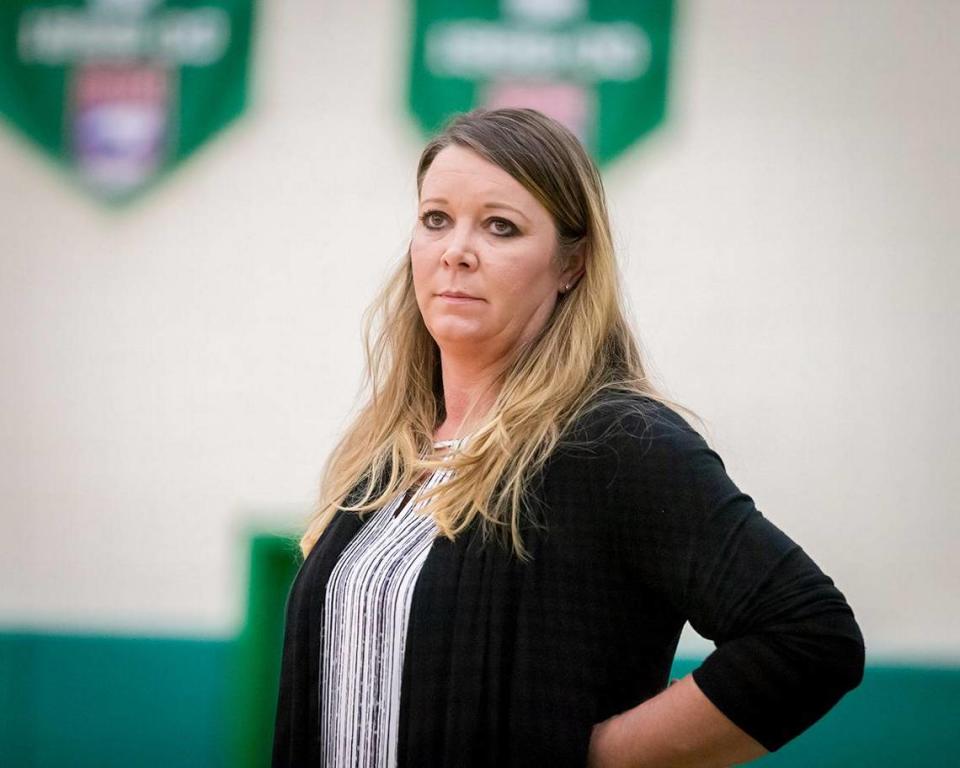
“I think some other sports have started to take over, where it’s easier to get a scholarship, like in field hockey, volleyball or softball,” said former South Mecklenburg coach Cristie Mitchell, now a co-host on The Observer’s Talking Preps streaming show. “Basketball was so competitive, so girls started playing other sports. I also think AAU has had a big influence. AAU coaches have more influence than high school coaches used to have, so a lot of AAU programs want kids to play with a certain (high school team) and they can influence kids to play together, transfer, move, whatever that is. I think AAU has played a part in making powerhouse teams.”
Mitchell said that environment has helped create a lot of coaching turnover among the lower-performing teams, which exacerbates the problem.
“No one wants to wade through the process,” Mitchell said. “Look at the lower teams. They’ve had two, three, four, five coaches in the past six or seven years. Coaches are using these schools as a stepping stone. You can’t fault them for that, but it’s the same with kids. They want to win and play with good talent, too.”
More education is needed
Mitchell runs the successful Charlotte Hoops Challenge Thanksgiving tournament in the area. It usually features a bevy of elite girls’ teams. She’s started offering free weekly clinics to help teach more middle school girls the fundamentals of the game.
“It’s going to take coaches and trainers and the community to come together,” Mitchell said. “Instead of, ‘I’m only concerned with these kids in my program.’ We have to have more things that get more girls involved. If we can start in middle school and let high school coaches do the training and make these relationships in middle school, it would really help.
“A lot of times it gets almost scary for high school coaches to build relationships with middle schools because it looks like recruiting. One hundred percent of kids (at a middle school) don’t go to my high school. It might be three or four. So if a high school coach goes to watch, it’s, ‘Is this coach recruiting my kid?’ I wish middle schools 100 percent all went to (the same) high school so kids can stay together.”
Mitchell worries what will happen if these blowouts — the 95-point types of losses — continue to happen. She worries that all of the goodwill training in the world won’t change what’s coming.
She said, “If you get beat up day in and day out, even if you stick with it through the season, you may say, ‘I’m going to try another sport during the winter next time.’ I mean, you can only take so much abuse before you finally give up on it.”
Are the blowouts necessary, though?
N.C. High School Athletic Association commissioner Que Tucker sent a letter to her more than 430 member schools during the season. She was concerned about the types of results she was seeing in girls’ basketball.
“I think it’s conceivable we could lose some girls as a result of being humiliated by such lopsided scores,” Tucker said. “I don’t think there’s ever a place in any sport to have a score that really embarrasses another team. (In her letter), I wanted to cause our coaches to think about what you’re doing. ... I’ve been to games where the starting five is still in the game and you’re winning by 40 with a running clock. You’re still picking up at half court.
“Those things are unnecessary.”
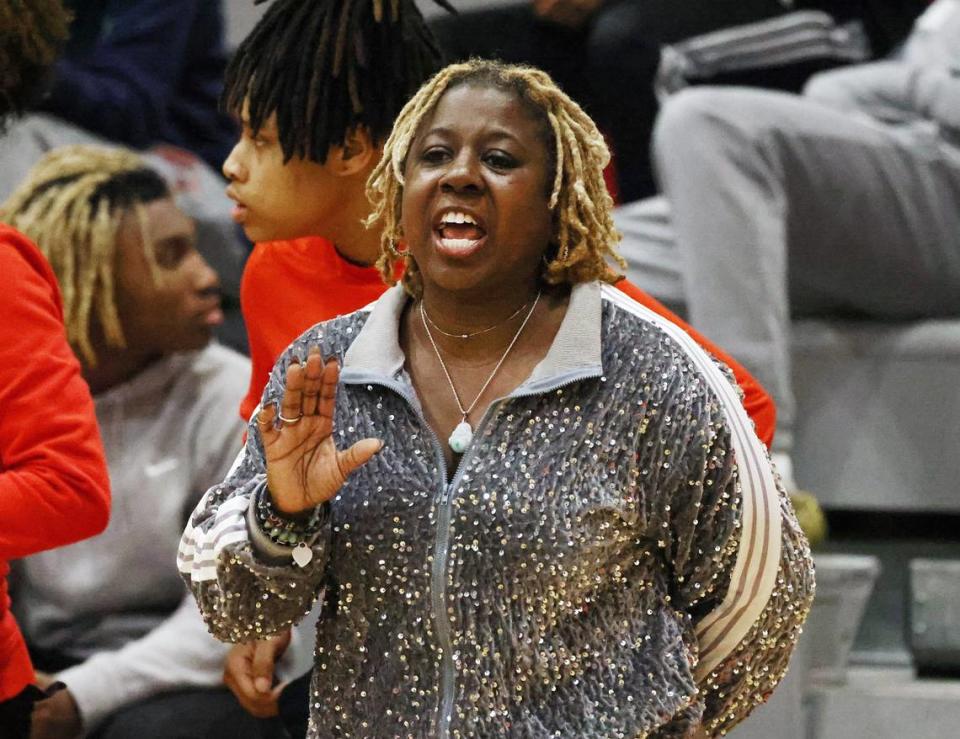
In Rock Hill, South Pointe girls’ basketball coach Stephanie Butler has been on both sides of the blowout. She once built a state championship national power at Butler High in Matthews.
She said that in South Carolina, she’s seen parents gravitate to winning programs known for having coaches who work with players year-round.
She said the number of girls who play basketball year-round is far fewer in South Carolina than what she saw while in North Carolina.
“And you do have some coaches that are pretty serious about the game,” Butler said, “and not to say there aren’t serious coaches in other sports, but sometimes kids tend to not want to put all that work in. Basketball is hard. And maybe I’d rather stay home or go to the dance team or cheer competitively and not put so much time into playing a singular sport.”
Butler’s team finished 26-3 this season, winning by an average of about 34 points per game. But she said she made sure to play all of her players in blowout games and not to press.
“I know what I try to teach my kids,” she said. “I’ve had coaches intentionally try to run up the score, maybe it was because of vendetta against me. But that’s not fair to the kids. I would never try to demean kids or a program.”
At Hopewell, what’s the future look like?
The Observer visited a practice at Hopewell this month. The Titans had seven games this season where they didn’t score nine points as a team.
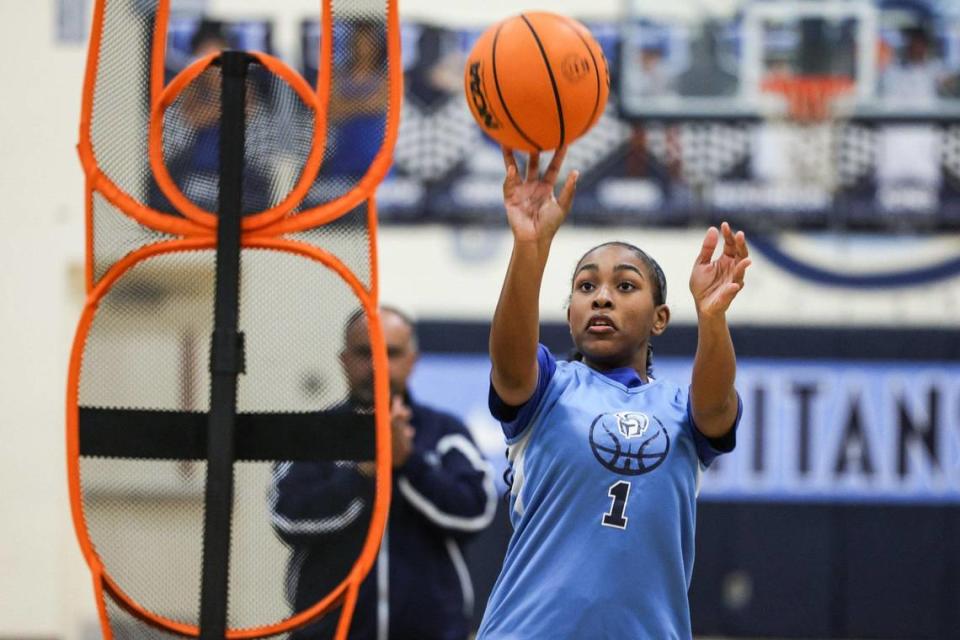
The Titans weren’t working on plays or schemes, but on basketball basics — learning to catch and shoot, making two-hand passes.
“We’re 2 1/2 years behind everybody else,” said Brown, the first-year coach. “Having three coaches in four years has hurt, too. A culture hasn’t been established, consistency hasn’t been established. That’s affecting the program, too.”
But Brown is almost always optimistic, even after the worst of defeats. His team — which has one junior and no seniors — has adopted his attitude.
“If you saw us at the beginning of the year to now, there’s a huge difference,” said freshman Gabrielle Studer, who is 15. “At the beginning of the year, we were all trying to get used to high school basketball, with six freshmen on the team. We had no idea what environment we were getting into. Even though we can lose a game (by a lopsided score), Coach is like, ‘24 hours, let it sit and then we’ll get back on it.’ We’re trying to get better.”
But Studer said some of those really lopsided defeats really do sting.
“It can be disheartening,” she said. “I think sometimes it can be a selfish act to try to prove something, but (the other team) is doing what their coach has told them to do, and that’s what we’re doing as well. We’ll grow as a team together and hopefully we’ll get better.”
Sophomore Leah Smith played on the Titans’ junior varsity last season. She said she’s noticed that some of her friends who might play basketball give up because they are not as skilled as other girls and don’t want to or cannot put in the time necessary to get there.
But she thinks the attention being shown to college players such as Caitlyn Clark and college teams such as Dawn Staley’s South Carolina Gamecocks might trickle down to high school and help bring the game back.
“I think girls look up to college players and want to be like them,” Smith said, “so eventually there will be more girls who chose to play basketball because they know they can be good at it, too, but they’re going to have to focus on just basketball.”
For now, Smith said her team plans to stay together, keep playing and keep working under Coach Brown.
The plan at Hopewell?
Stability.
“There’s a lot of what I call ‘Feeder Flight,’” Brown said. “Students in feeder programs going to other (high schools) because they have established reputations. There’s no community feel. I graduated from Harding in 1988. No matter how good West Charlotte was, we would never think about leaving the neighborhood to play for West Charlotte.
“That’s what we’re working toward here. Right now my feeder program at Bradley (Middle School) was undefeated and I’m trying to keep them together. I have three of the four staying together but one that wants to jump ship.”
Brown has told his players he plans to be around, and he told The Observer the same thing. He smiles a lot when he talks and he appears to have a lot of patience.
And he said he knows tomorrow won’t be easy.
“I’m here,” he said. “It’s going to be a process, but we’re working on relationships with the middle school. I’ve got some promising seventh- and eighth-graders coming. These girls are getting better. They’ve been through a lot, but you know what?
“In two or three years, we’ll be all right.”

